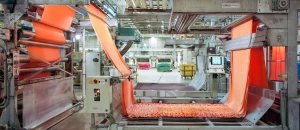This Masterclass is all about fabrics, led by founder of this The Sustainable Fashion Collective and our sister business Offset Warehouse. We'll dive into the world of ethical materials, and specifically why we need to be using them to create our responsible products.
"For me, working more sustainably means combatting fast, disposable fashion. To make a product that transcends seasons and is cherished for decades to come, it needs to stand the test of time in a way that doesn't harm the environment or the people who make it."
The production of textiles is a vast subject, so this topic will be an overview of the facts in order to give you the general picture of what’s going on and, how it affects the planet and people. If you’d like to read about any of the issues in more depth, there are lots of links to useful and interesting articles at the bottom of this section.
In this Masterclass you will learn:
- An overview of what 'ethical' fabrics are
- How conventional textiles impact socially, environmentally and on health
- The environmental impact of textile production on water, soil and air
- The social impact of textile production, including how it affects you
- Textile production and animal welfare
- Best practices for extending the life and caring for your eco textiles [downloadable]
- The toxic chemicals in conventional textile production [downloadable guide]
- How to identify the areas of most concern to you with conventional textile production
- Recommended ethical fabrics and how to source them [downloadable]
-
Introduction To Why We Need To Be Using Ethical Fabrics
with Charlie Bradley RossRead More...Summary
This 3 minute introduction to the full Masterclass on Why We Need To Use Ethical Fabrics includes a roundup of the issues that conventional textiles cause.
For me, Charlie Bradley Ross, working in a more sustainable way means combatting fast, disposable fashion. And if you're going to make a product that transcends seasons and will be cherished by your customer for years (if not decades) to come, then it needs to stand the test of time and do so in a way that does not harm the environment or the people who make them.
-
The Environmental Impact of Textile Production
with Charlie Bradley RossRead More...Summary
This is a 23 minute Lesson that looks at the environmental impacts of textile production, to help you understand what you need to consider when sourcing and using materials for your products.
Did you know that an estimated 20,000 litres of water are required to produce just 1kg of cotton fabric – that’s enough for just one t-shirt and a pair of jeans? Or that an estimated 8,000 synthetic chemicals are used worldwide to turn raw materials into textiles, many of which will be released into freshwater sources? Staggering!
In this Lesson, we take a look at the jaw-dropping effects that irresponsible fashion production has on our planet. Once you have the knowledge, you can empower yourself to make more informed decisions on the best textiles to choose for your products.
-
The Social Impact of Textile Production And A Fabric's Effect On You
with Charlie Bradley RossRead More...Summary
This is a 22 minute Lesson that looks at the social impacts of textile production, and how these issues extend to you and your customers as the wearer.
Bangladesh’s textile industry is worth $28bn a year to the country – it's virtual lifeblood. So employees are trapped between potential poverty and a dangerous working environment. They have no choice but to endure whatever conditions they are given. In the full Lesson this clip is from, we learn about the social cost of textile production; from raw material to end product, how does it affect the people who produce it? Social impact also encompasses animal welfare. So the animals that create or contribute to the raw materials, how have they been treated?
In the second half of the video Lesson, we take a look at how fabrics can affect your health and your customers’ health, as the wearer, too. We discuss some of the nasty chemicals to avoid. We’ll also take a look at some the companies and organisations doing amazing things.
-
How To Choose Ethical Fabrics Guide
with The SFC TeamRead More...Summary
As we have already discussed in this Masterclass - How To Source Ethical Fabrics - the reasons to use ethical fabrics are numerous and obvious. But, how to do it in a way that is ethical, while also viable for your business?
It is best to look at your choices on a case-by-case basis. As we have discussed, there are positives and negatives for all materials, which is why some designers find it so difficult to find the perfect, ethical fabric. Each fabric brings with it its own environmental or social impact, and it can be worrisome to find a fabric that is protecting the environment, without, at the same time, jeopardising human rights or health.
This downloadable guide and toolkit will help you identify what your priorities are as a business owner, and help you find the most suitable fibre choices and subsequent fabrics for your products.
-
Increase the Lifespan of Textile Products
with Charlie Bradley RossRead More...Summary
Did you know, extending the life-cycle of a garment by nine months, can reduce their carbon, waste and water footprint by 5-10%? Here, we share our tips for extending the life cycle of your products, both at the manufacturing level, and tips to share with customer to help at the consumer level.
-
How To Source Fabrics: Toxic Chemicals Guide
with Charlie Bradley RossRead More...Summary
Understanding the chemicals used in the production of textiles and in clothing manufacturing is central in the debate around sustainable fashion. In this handy downloadable, we list the toxins to watch out for primarily in your fabric production, though also relevant to garment production for example with certain denim processes.
-
How To Source Fabrics: The Big Eco Textile Supplier List
with Charlie Bradley RossRead More...Summary
We are delighted to present The Big Eco Fabric Supplier List.
This ethical textile matrix contains our personal team research spanning over a decade. We are sharing the contacts here because of our commitment to helping designers and makers across all industries source all the ethical textiles, materials and fabrics they require.
Please read and respect the terms of use before contacting these producers.
-
Why We Should Use Natural Dyes For Fashion
with Raaja RajanRead More...Summary
We were joined by Raaja Rajan, Chief of Operations for Natural Dye House, to learn more about the environmental and social impacts of using chemical dyes for textiles and fashion as opposed to natural, plant-based dyes. In an honest and eye-opening interview, Raaja explains how designers, brands, and consumers can all contribute to a less-polluting and more socially engaged fashion industry in India.
-
Sustainable Textile Predictions for 2023
with Charlie Bradley RossRead More...Summary
One of the biggest challenges of the textile industry is manufacturers (and their customers) taking on the responsibility of examining their processes. There has long been a demand for textiles that do not harm the environment and people in the supply chain, and now an ever-growing demand for circular materials. The good news is that with the help of new technology, the textile industry is becoming better equipped to address most of the pain points in its supply chain. And this year, we expect to witness more innovations than ever being accelerated and scaled.
In this lesson, we shed some light on the innovations we can expect over the next twelve months.
Interviews
Sofia Ilmonen: Organic Fabrics and A Unique Organic Process
Saturday Sep 1st, 2018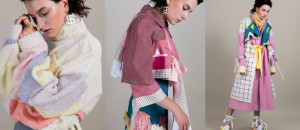
Ellen Rock: Collaborating with artisans across the globe
Monday Apr 1st, 2019
Technical Tutorials
Fabrics: Wild Rubber from the Amazon
Sunday Jul 1st, 2018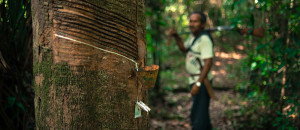
Weganool®: Vegan Wool Fabric Made From Weeds
Tuesday Jul 7th, 2020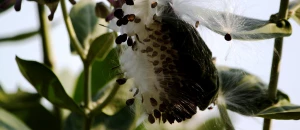
Past Events
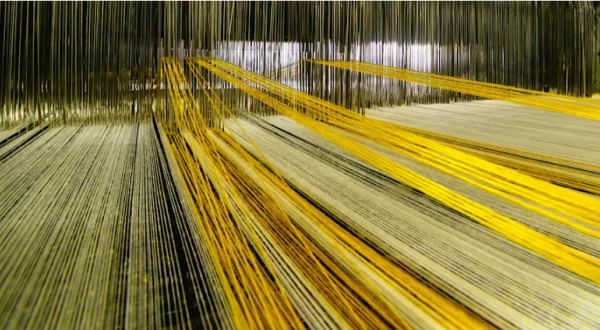
Fabric of the Future: Exploring the Latest Textile Innovations
Wednesday Mar 29th, 2023 - 14:00pm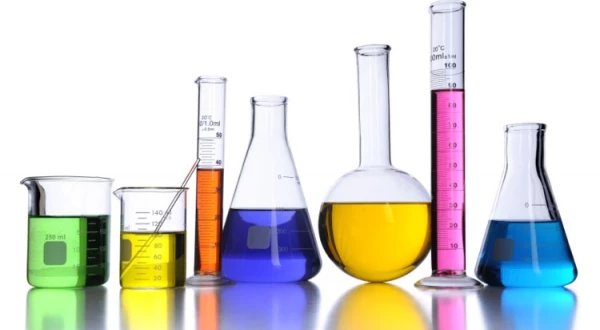
Toxic Fashion: Chemicals Used In The Textile Industry
Tuesday Jan 1st, 2019 - 00:00amAdditional links:
Textile Exchange's 2019 Preferred Fiber and Materials Report - market shares of all materials, their social and environmental impacts and innovative material science companies you can read up on
Labour Behind The Label Reports - up to date reports on supply chain news, tools for checking up on brands, and explanations on production routes for fashion items
Systain Report (referred to in video two)
The Higg Index from the Sustainable Apparel Coalition
Zero Discharge of Hazardous Chemicals’ Roadmap to Zero - a collaboration between key industry stakeholders to reduce hazardous chemicals in the entire supply chain. The ZDHC Manufacturing Restricted Substances List (ZDHC MRSL) is a list of chemical substances that you can use to up your knowledge, but also as a tool when working with textile suppliers.
Waste Resources & Action Programme (WRAP)’s Sustainable Clothing Action Plan (SCAP)
Follow on Masterclasses:
Sourcing Sustainable Trims And Haberdashery
Working With Sustainable Cellulosic Fibres
Recycled Fabrics: The Social, Economic and Environmental Impacts
Additional Reading
Top Sustainability Textile Trade Shows All Designers Should Visit
Monday Feb 14th, 2022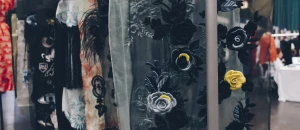
How Much Deforestation Is Your Cotton Creating?
Tuesday Jul 20th, 2021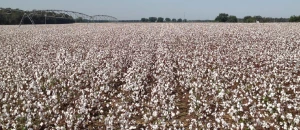
Future Fabrics Expo 2021: Biodiversity, Natural Fibres and Regenerative Textiles
Sunday Jul 11th, 2021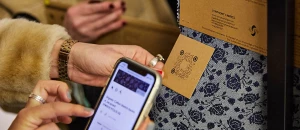
Spring Summer 2022 Colour And Material Trends: Premiére Vision
Monday Feb 22nd, 2021
Does Bioengineering Hold the Key to Our Material Future?
Monday Feb 15th, 2021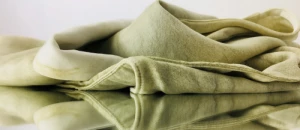
How To Fight Injustice With Fair Trade Fabrics
Monday Feb 8th, 2021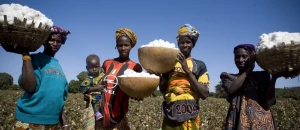
Indian Handwoven Khadi Fabrics For Clothing And Interiors
Tuesday Jan 5th, 2021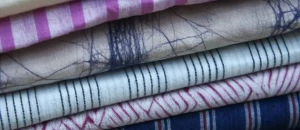
Building A British Fibreshed And Its Benefit For Fashion
Friday Jul 3rd, 2020
What is Regenerative Agriculture?
Thursday Jul 2nd, 2020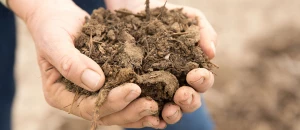
Eco producers, manufacturers and innovators at Première Vision September 2019
Monday Sep 30th, 2019